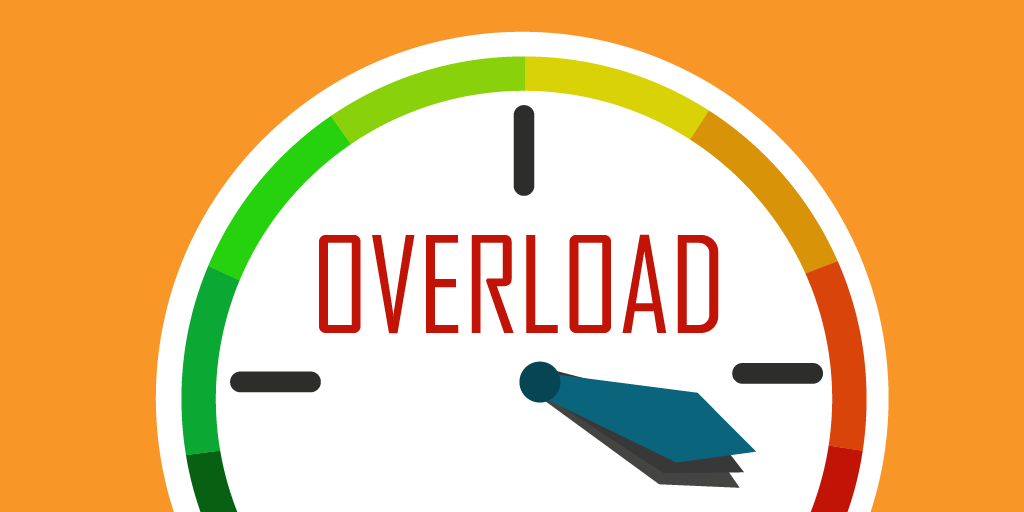
If we think about our students like we do a computer—where we have finite inputs and then desired (or undesired) outputs—we think differently about the inputs. The coding term GIGO (Garbage In, Garbage Out) rings true. If we put incorrect messages about life, work, success, and education into our students, we could end up with poor student outcomes.
Humans are much more complex than this simple analogy. There are millions of factors that go into our “outcomes” in life, and some of them are outside of anyone’s control. But teachers, and even more so parents, like to think that by providing some influence on the external factors of a child’s upbringing, some positive results will occur. We try to create “rich soil” for our children to grow and flourish from.
Input Directed at Our Youths
Many “plugged in” students suffer from information overload with hundreds of different messages about life hitting their eyes every day. Some of these messages are not the “inputs” we want our students to receive.
I remember as a child growing up in the 80s, the most dangerous source of input for parents and teachers was MTV. Cable networks were sprouting up and MTV had a huge “cool” factor with kids—it was rebellious and fun. Strict parents (luckily not mine) would not allow some of my friends to watch MTV. It was a much simpler time then, and my parents’ generation would claim it was even simpler when they were growing up.
MTV stands out for a few different reasons. Most people had access to cable TV, so it was pretty pervasive. It was “new” in a sense, so it seemed exciting and fresh. It was also edgy and had a clandestine feel to it—most parents weren’t watching it. Will Smith’s “Parents Just Don’t Understand” and the Beastie Boys’ “(You Gotta) Fight for Your Right (to Party!)” sent a message to youth that by watching MTV, they were part of something that their parents were not.
Are Our Students Receiving the Right Messages?
Much of modern social media has many of these same characteristics. It is very pervasive with youth—it feels new and is constantly being updated in both the look and feel. And, in many instances, it is an area that parents don’t understand and don’t venture into.
It is much more complex today than it was 20, 30, or 50 years ago. The source of this complexity for our youngsters in this country is the vast number of “inputs” they now have access to. Let’s consider the messages that our students may be exposed to about values and priorities in life. (Just for clarity sake, when I refer to “messages” here, I am referring to a message about life, priorities, and values—not a direct message on social media.) Consider the following questions:
Who are they receiving messages from?
The scary truth to this answer is that it could be anyone. It isn’t limited to cable TV as it was a generation ago, and definitely isn’t limited to three major networks. Students receive messages about life from many sources, and from hundreds of people through each of these sources. Keeping students away from social media helps to curb this, but there are many “chatting” options for students within video games and other apps. Even a basic Google search leads a student into a world with a head-spinning amount of options, messages, and opinions.
What messages are they receiving?
This question is a tricky one. It may be safe to assume that most of the information that students find on the Internet is harmless or neutral. In most cases, I think this assumption is true. The scary part for schools and parents is when this isn’t harmless. Some one-way messages come directly from a source like Netflix or YouTube (think Thirteen Reasons Why). Other messages come directly from other students—messages about right and wrong, who to trust, drugs, trafficking, and suicide occur between students in chats all the time. Again, most are harmless, but it is the dangerous ones that worry us and we want to try to prevent.
What impact does it have?
I am not a social scientist, so I am not sure that I have the ability to answer this well—I also think that there is not clear research on the answer to this. What I can speak to is the individual impact I have seen on particular students. I have witnessed students messaging suicidal thoughts and plans to other students. I have had students from across the country contact me to report inappropriate messages from my students. And we have seen multiple searches for information that would worry most parents.
The vast access to messages from all over the world can create difficult situations for our students. If we don’t want “garbage out” from our students, we need to make sure there isn’t garbage going in.
Be sure to subscribe to our blog so you don't miss the upcoming second part of our Information Overload series, where we’ll discuss possible solutions for teachers and parents to help our students navigate these tricky waters.



